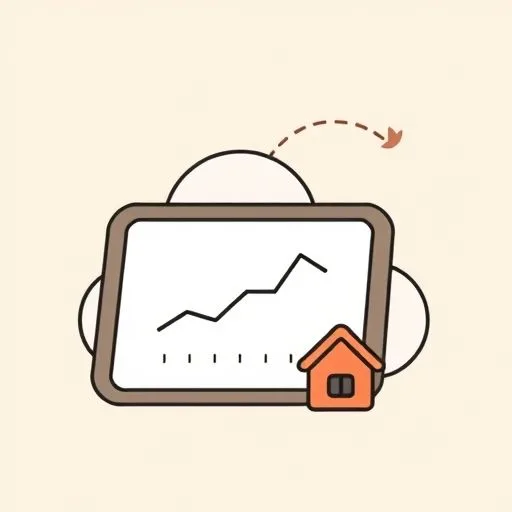
You know that moment when your child looks up from their tablet, eyes wide with curiosity, and asks, ‘How does it know what I like?’ It’s those questions—simple, profound, and utterly human—that got me thinking about transparency. Not just in the cloud systems I work with daily, but in the very tech that shapes our family’s world. Because here’s the thing: whether it’s enterprises demanding visibility into data or us parents navigating screen time limits, we’re all seeking the same foundation—trust. And trust, my friends, starts with clarity. Kind of like when our Friday bibimbap night turns into a make-your-own-toppings adventure—everyone sees what goes in! Let’s dive into how cloud transparency isn’t just a corporate buzzword; it’s a parenting superpower waiting to be unlocked.
Why Does Transparency Feel Distant—And How to Bring It Home?

Imagine this: you’re planning a family trip, scrolling through apps that suggest destinations based on… well, who knows? It feels magical until you wonder, ‘Wait, how does it really work?’ That’s the exact gap enterprises face with cloud providers—a craving for visibility into the ‘how’ and ‘why’ behind the scenes.
But here’s where it gets personal for us parents. We juggle that same unease when apps recommend videos to our kids or track their progress in educational games. We want to trust, but we need to see behind the curtain. Cloud transparency isn’t just for tech—it’s a family essential.
And oh, the parallels are stunning! Big companies love digging into logs and tweaking settings—trust me, I’ve been there!; we set screen time limits and privacy settings. They worry about encryption; we fret over who’s really ‘listening’ through smart devices. It’s all rooted in that deep human need for control—not to restrict, but to understand.
Because when we understand, we can engage confidently, whether it’s launching a cloud workload or handing a tablet to our seven-year-old.
So let’s flip the script. What if we applied those enterprise-level transparency principles to our family tech? Start small: explore parental controls together, explain why certain apps need permissions, or even turn data tracking into a game (‘Spot what the app learns about us today!’).
It’s not about fear; it’s about empowerment. And trust me, watching your child grasp these concepts? That’s where real digital literacy begins—not with rules, but with revelation.
How Can You Build Trust Bridges From Cloud to Family Life?

Here’s a truth that hit me hard: transparency isn’t a one-time setup; it’s an ongoing conversation. Enterprises negotiate SLAs and demand reports; we nurture open dialogues with our kids about online safety. Both require consistency, honesty, and a dash of humility—because nobody has all the answers.
Think about those evening chats after school. Your child shares a funny video they saw, and you gently ask, ‘What made it pop up on your feed?’ That curiosity? It’s the seed of critical thinking.
Similarly, cloud providers are now offering tools to track data interactions, giving enterprises glimpses into their own digital footprints. We can do the same at home! Use built-in features like activity reports on devices to review screen time together.
Make it a family meeting topic: ‘This week, our apps collected this data—what do we think about that?’
And oh, the joy when it clicks! My daughter once exclaimed, ‘So it’s like a recipe—the app mixes what I do to make new ideas!’ Exactly. Transparency transforms confusion into creativity.
It turns passive consumption into active engagement. So let’s borrow from the enterprise playbook: demand clarity, ask questions, and co-create understanding. Because in a world where tech often feels opaque, building these trust bridges isn’t just smart—it’s heartfelt.
And just like we’d peek underneath the hood of a car before a road trip, we can explore our apps together.
What’s the Ripple Effect of Family Transparency on Your Life?

Now, here’s the beautiful part: when we prioritize transparency, it doesn’t just protect; it connects. Enterprises find that clear data practices boost collaboration; families discover that open tech discussions deepen bonds. It’s that ripple effect—small actions creating waves of trust.
Consider this: just as cloud transparency helps enterprises feel secure enough to innovate, family transparency frees us to explore tech joyfully. Instead of nagging ‘don’ts,’ we focus on ‘how-tos.’ Instead of fearing the unknown, we embrace curiosity.
That’s how resilience grows—not in avoidance, but in awareness.
So take that energy into your day. Maybe it’s trying a new educational app together and dissecting its privacy policy like detectives. Or perhaps it’s setting up ‘tech check-ins’ where everyone shares one thing they learned online.
Transparency isn’t about data; it’s about dignity. It’s saying, ‘You deserve to know.’
Last week on our way home from park play, my daughter spotted our phone’s activity chart and said, ‘Dad, it’s like charting our fun adventures!’ These moments aren’t just lessons; they’re memories in the making. And they echo far beyond screens, teaching values like honesty, critical thinking, and empathy—the very skills that’ll future-proof our kids in an AI-driven world.
Because at its core, that’s a principle worth living—and sharing—with explosive, heartfelt enthusiasm.
Source: Cloud Transparency in the Enterprise Era, Cloudtweaks, 2025/09/12 09:52:26
